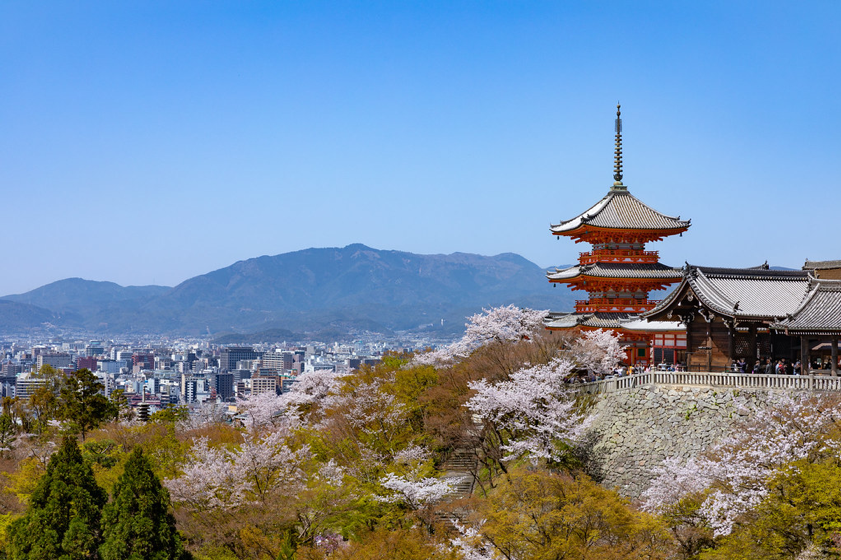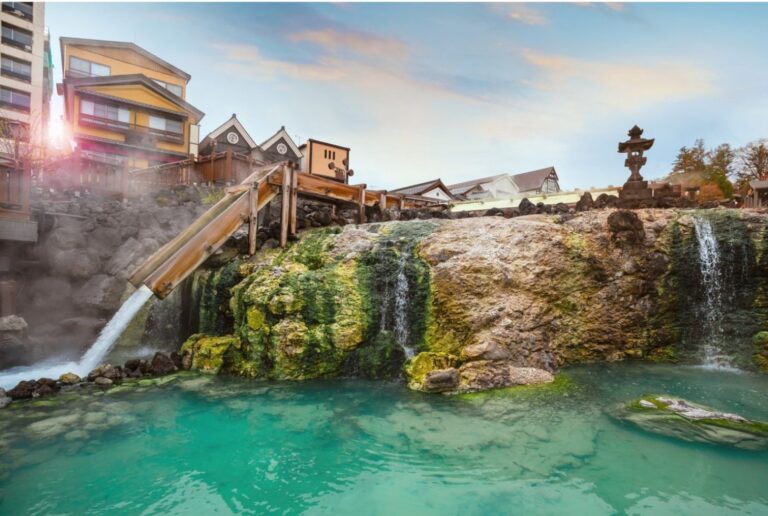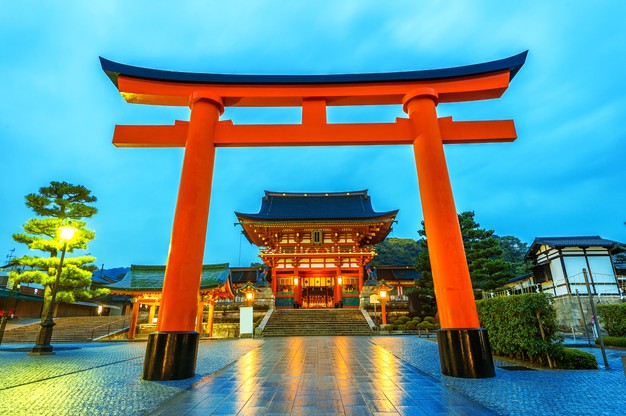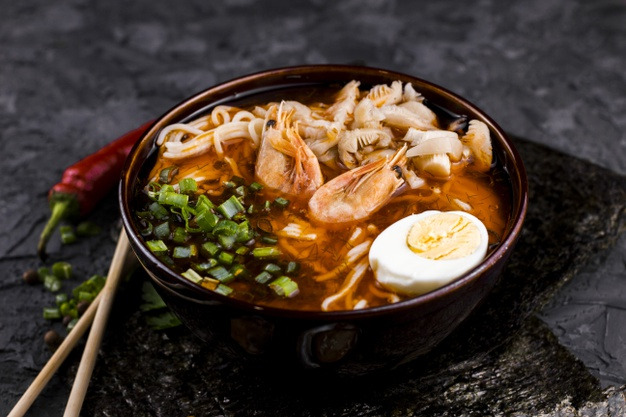Kyoto, Japan served as Japan’s capital and the emperor’s residence from 794 until 1868 and is Japan’s tenth largest cities with a population of 1.5 million people. Over the centuries, Kyoto was devastated by many wars and fires, but due to its incomparable historic value, the city was dropped from the list of target cities for the atomic bomb and escaped destruction during World War II. Innumerable temples, shrines and other historically priceless structures remain in the city today.

Shinto Shrine At Japan Image Credits – wikimedia.org
The few things that first come to mind while thinking about Japan are – sublime Zen gardens, enigmatic Buddhist temples, colorful Shinto shrines and elegant geisha. The must-see attractions and activities in Kyoto are- Buddhist temples, Shinto shrines, Japanese gardens, a night in a ryokan, Japan’s exquisite traditional accommodation, a meal in a Japanese restaurant-whether gourmet or hole in the wall, an evening stroll through the Gion entertainment district.
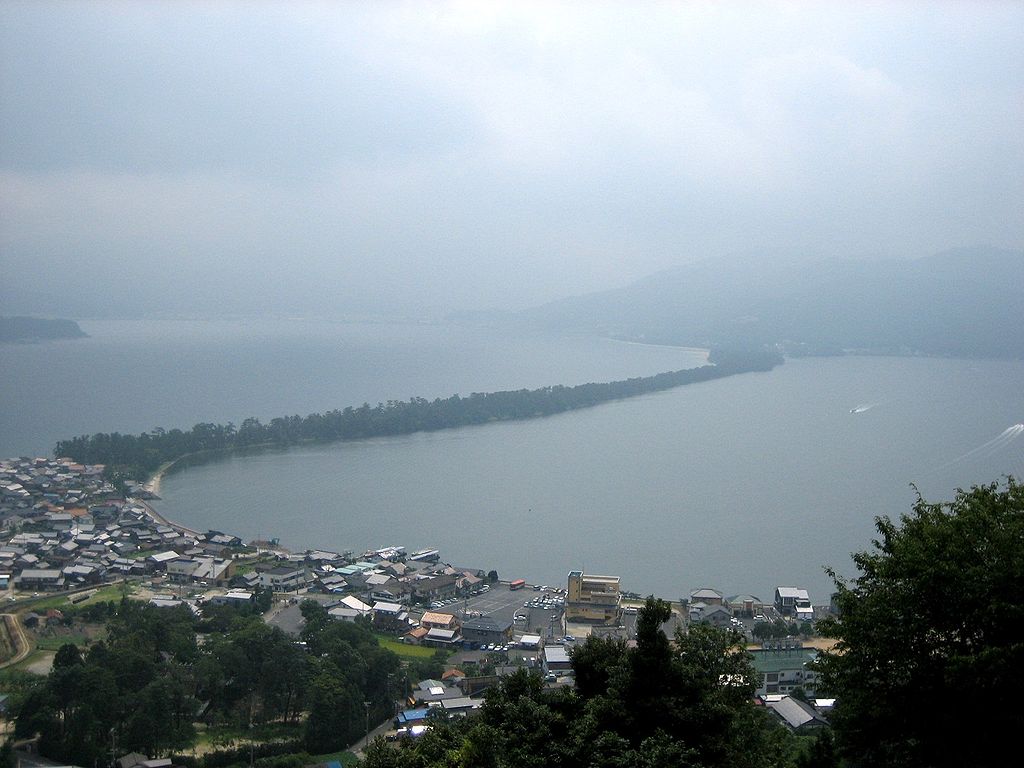
Amanohashidate Image Credits – wikimedia.org
Beyond the city lies Kyoto’s many striking rural areas. In the north, Amanohashidate has long been considered one of Japan‘s three most picturesque places. Nestled in the mountains, Miyama is one of the last towns with thatched-roof farmhouses, many of which are still inhabited where one can enjoy delish local vegetables and the famous green tea grown in Uji.
Japan is never too hot, too rainy or too cold to visit. Spring and fall are the ideal times to visit, with warm to cool temperatures and mostly bright skies. The late March/early April cherry blossom season is very popular, for obvious reasons, but it’s also very crowded. The November and early December fall foliage season is also great and not quite as crowded as the cherry blossom season.
Spring
Late March to April is the time to view the cherry blossoms and the fresh green maple leaves in shrine and temple gardens.
Summer
The summers (from late June to early September) can be hot and humid, but not appallingly so. Highlights of the hottest season comprise riverside dining, cormorant fishing performances, beach excursions, the month-long Gion Festival, and fire displays to honour the spirits of ancestors.
Autumn
Kyoto’s autumn foliage entices travelers from the world over. Harvest moon festivals, such as the Jidai Matsuri, are another autumn highlight. The cool temperatures are seamless for mountaineering at Mt. Ponpon and Mt. Atago.
Winter
The winters (from early December to late March) are not freezing but can be cold. It is during winters that Kabuki’s biggest stars come to perform, plum blossoms emerge after the snows, and countryside offer plenty of warmth. Winter festivals like Arashiyama Hanatoro illuminate the city of Kyoto.
Kyoto is the most gratifying city in Japan and a place all travelers should visit at least once in their lives.
Are you looking to explore the world with Star Vacations?
Please fill out the form, or Contact us +91 9582896591 We will get in touch with you to discuss the details.
